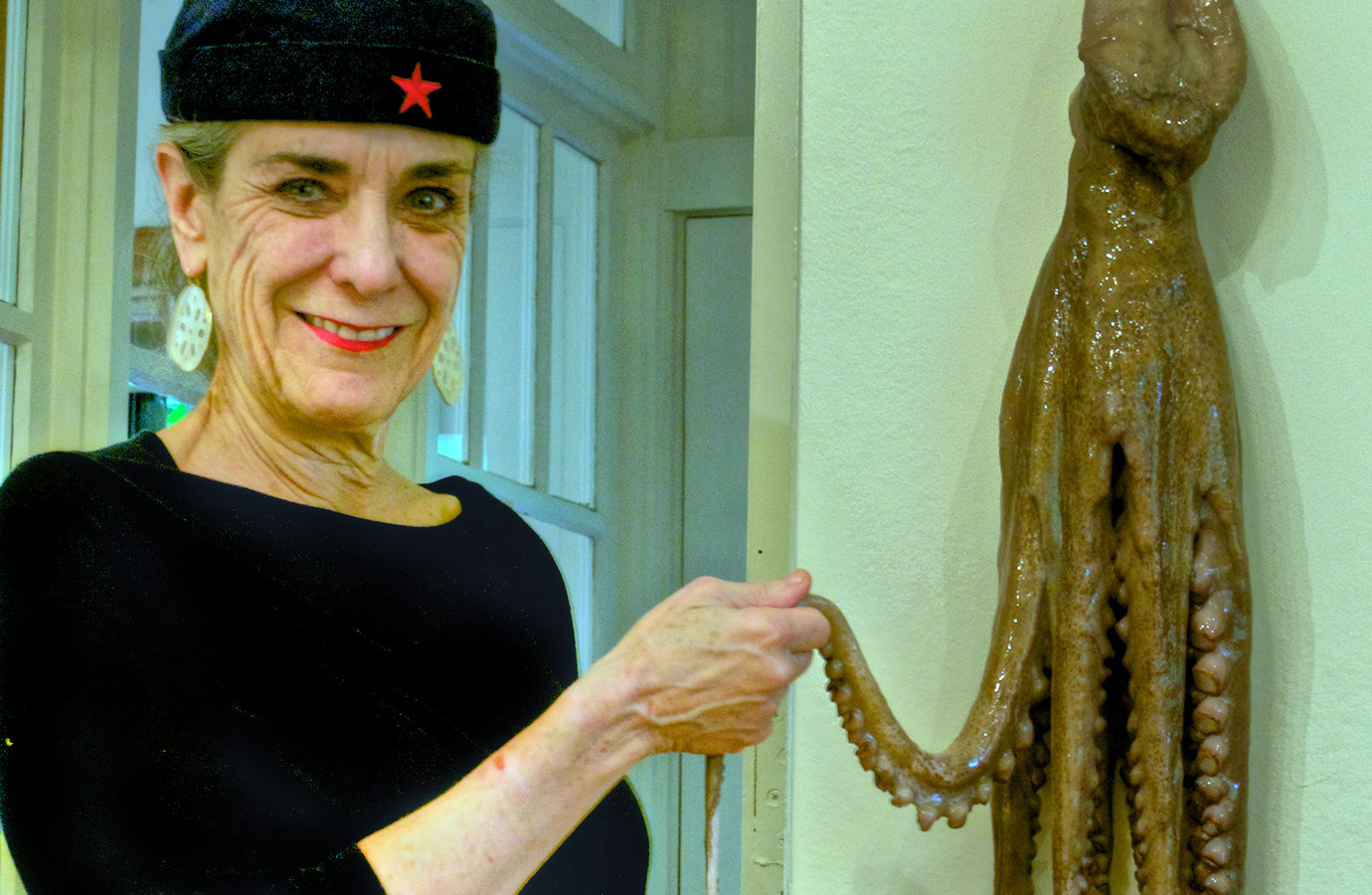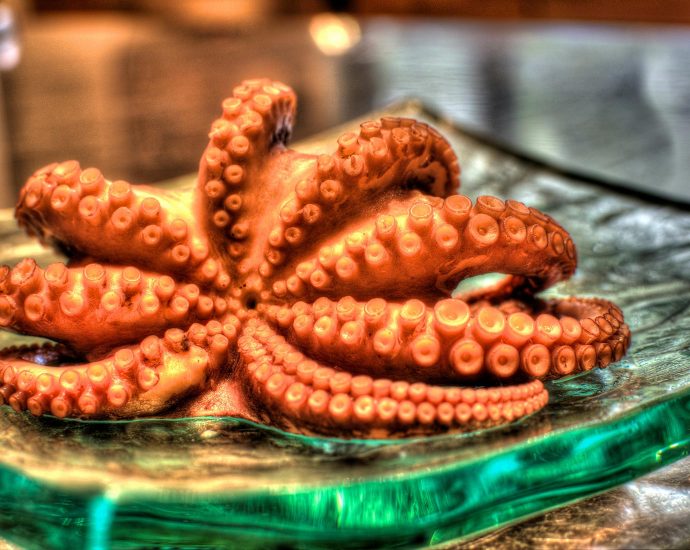Octopus is something no one feels neutral about. At the fish market, the sight of the sea creature sprawled on ice either brings surprise and delight or a shudder of disgust. As a choice on the menu, the diner either insists on ordering it at every opportunity or quickly dismisses the selection. I’m in the former camp, I love octopus and prepare it and eat it every chance I get.
My first introduction was on a trip to the Peloponnese in Greece when I was in my early 20s. We were staying in the port town of Gythion. Fishermen would net the octopus and then tenderize the catch by beating it against the rocks. In taverna courtyards you’d see them strung up on laundry lines waiting to be cooked and served with a basket of bread, olives, and glasses of ouzo or coarse red wine.
After that experience, I ordered octopus in Greek restaurants in New York and Chicago every chance I got. I was often disappointed, as the octopus was tough and dry. That’s how matters stood until a 2002 trip to Padron, a Spanish town in Galicia. Every Sunday there was a large farmers’ market with two food tents, one for grilled pork ribs and one for octopus. People sat at long plastic picnic tables. The clamor was incredible. While the crowd talked and ate, gypsy kids, lugging huge suitcases, weaved between the tables. They sold everything from watches to electrical equipment, from wrench sets to panties and brassiers. At the entrance to the octopus tent, the Pulperia, were two gigantic copper cauldrons in which octopus were vigorously boiling. When they were just tender, the cooks scooped them out of the pot to drain and then used giant scissors to cut bite size pieces onto trenchers. Smoked paprika and olive oil were drizzeled on top, and the wooden plates were served with large white porcelain cups of wine and baskets of bread. So that’s how it should be done! I was determined to embrace the octopus in my own kitchen.
It is not hard to find octopus in Chicago or in any other city where there are either Greek markets or large Asian populations, preferably both. Fresh Farms International Market on Touhy in Niles, Illinois always has it, sourced from Morocco or the Philippines. Eataly, the fancy Italian provisions store in Chicago and New York, carries octopus from Spain (reputed to be the world’s best). Whole Foods on a regular basis has baby octopus, and Jetro, the cash and carry restaurant supply store, has fresh, never been frozen, octopus from Mexico that comes in on Mondays and Thursdays. Japanese markets sell frozen octopus from Japan. It is already cooked (steamed) and most sushi chefs use this prepared product.

I prefer a large octopus (3 to 6 pounds) that has been previously tenderized by taking a pounding in drum-like containers similar to industrial dryers. I’ve tried all sorts of recipes and techniques, from carpaccios to oven poaching in olive oil, from steaming to grilling. What follows is what I’ve found to be the simplest preparation but also the best. It is a two-step process. Grilling, pan sautéing and cutting thin slices for a cold salad are all options for the final step. Octopus is really easy to prepare well.
HOW TO COOK OCTOPUS
